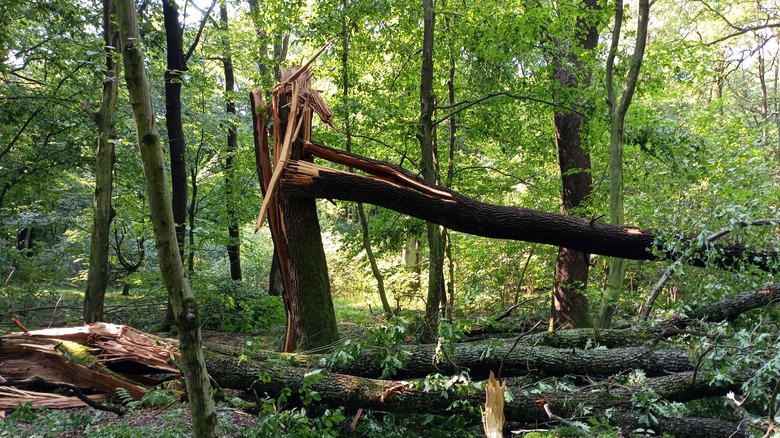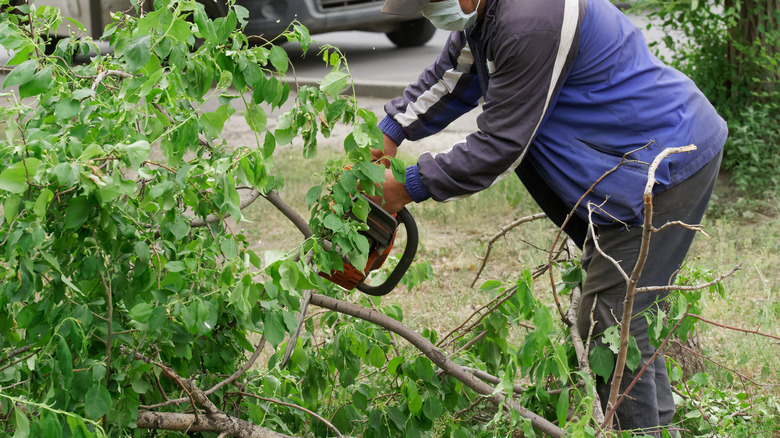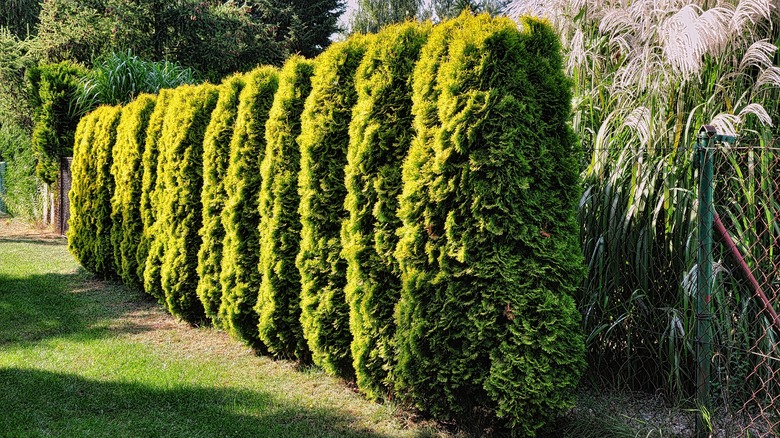How To Save Plants Suffering From Wind Exposure
Strong winds and storms can be detrimental to your plants. The force can cause broken stems, split branches, torn leaves, and it can even uproot them. Heavy wind can also cause dehydration, or wind burn, and carry in pathogens or damaging insects that wouldn't naturally occur in your yard. If left unaddressed, minor injuries can affect a plant's overall health. Fortunately, wind damage does not have to mean a death sentence for your plants if acted upon quickly.
While you cannot change the weather, there are plenty of ways you can give your plants the best chance to make a full recovery. You could try things like pruning your plants, thereby protecting them from disease, and giving them the support they need to stay upright. A tree or shrub that retains at least half of its leaves and branches may be able to recover. There are also steps you can take to prevent or minimize wind damage in the future.
How to help your plants recover from wind exposure
After a storm rolls through, carefully clear away the debris left behind, whether that be broken foliage from your plants or damaged property. A clear space will allow you to assess the state of your plants and give you a safe space to work. You should examine trees and larger plants first, as large broken limbs are a safety hazard that requires immediate attention.
After you have looked over the damage, the first thing to do is prune away torn, broken stems and branches. Pruning right away helps prevent diseases that enter through broken edges and gives the plant a chance to regenerate. Use your sharpest tools as clean cuts will help prevent disease-causing pathogens from entering. You should also trim away severely damaged leaves but try to keep as many as possible. Plants need these for photosynthesis, and they will need all the energy they can to regrow.
Plants will need extra resources as they heal from storm-related damage, so give them a deep watering and apply fertilizer. Mulching after this step also helps lock in moisture and nutrients while protecting damaged roots.
How to protect your plants from wind exposure
The best cure for wind damage is prevention. The type of protection you choose depends on the needs of your property and plants. One option is to use a windbreak, which is a semi-permeable barrier that slows wind and provides shelter for your plants. You can create a living windbreak by planting tall, dense hedges at the sides of your yard. You can also construct an artificial windbreak by weaving together branches, using fencing, or purchasing a fabric windbreak. Tall plants can benefit from support to prevent breakage, like stakes or climbing supports. Top-heavy plants or those with long, hanging branches can benefit from a quick pruning before a storm comes.
When planting in the future, consider the layout of your yard. If you're gardening on a slope, plants in the middle will fare better than those at the top or bottom. You can also choose wind-hardy plants like ornamental grasses, low-growing ground cover, and dense, sturdy shrubbery.


